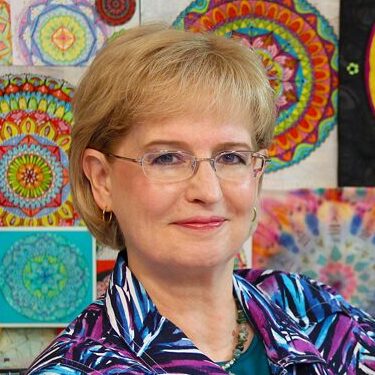We could spend hours talking about threads. The words fiber, yarn, mercerization, denier, weight, and Tex can be quite mysterious. In reality, all YOU want is thread that sews the way you want it to sew, right? So, let’s solve the puzzle together.
Members, simply click the purple button below to watch the video class.
Become a member today, just click the green button below for access to ALL the video classes. It's easy!
Did you know that the earliest threads came from thin strips of animal hide? They were used to stitch furs and hides together to make garments large enough to cover the human body. Egyptians discovered that thread could be made from plant fiber as well as wool and domestic animal hair. Silk fiber became thread in the hands of the industrious Chinese and Japanese.
When two or more very thin strands of fiber are tightly twisted together, the resulting creation is a circular thread. Yarn is produced in much the same way that thread is made. The words yarn and thread are often used interchangeably, however thread is used to sew textile pieces together and yarn is used to weave or knit the actual textiles.
The base fibers used in making thread are animal, plant and synthetic. Animal threads include silk and wool. Cotton, linen, and rayon are plant-based threads. Nylon and polyester are common synthetic threads and are the only fibers that be made from a single ply.
Specialty threads like metallics are used for surface decoration as opposed to construction as they are too finicky and delicate to sustain the stress and abrasion in garment seams.
To make things more interesting, some threads are created with a combination of fibers. A polyester core with an outer rap of cotton utilizes the positive qualities of both. Specialty threads, like those used in upholstery, are reinforced to add strength.
The Industrial Revolution of the seventeenth and eighteenth centuries exploded thread production as it moved into special factories equipped with high-speed machines. Threads produced this way allowed the creation of more uniform threads with fewer flaws, increased strength, better dye colors and a wider variety of thread options.
Once these advancements in thread production began, companies arose who pushed the envelope of possibilities to meet the demands of the consumer. In the twenty-first century we are blessed with threads for every conceivable need. We can stitch any type of textile with the perfect thread. We can upholster a chair, stitch a quilt from beginning to end and expect it to last for future generations, embellish textiles with myriad fibers and colors and we can even create our own heirloom hand-stitched books.
The key to getting what you desire is knowledge. This class is all about giving you that key so you can be sure your imagination and reality blend seamlessly!

